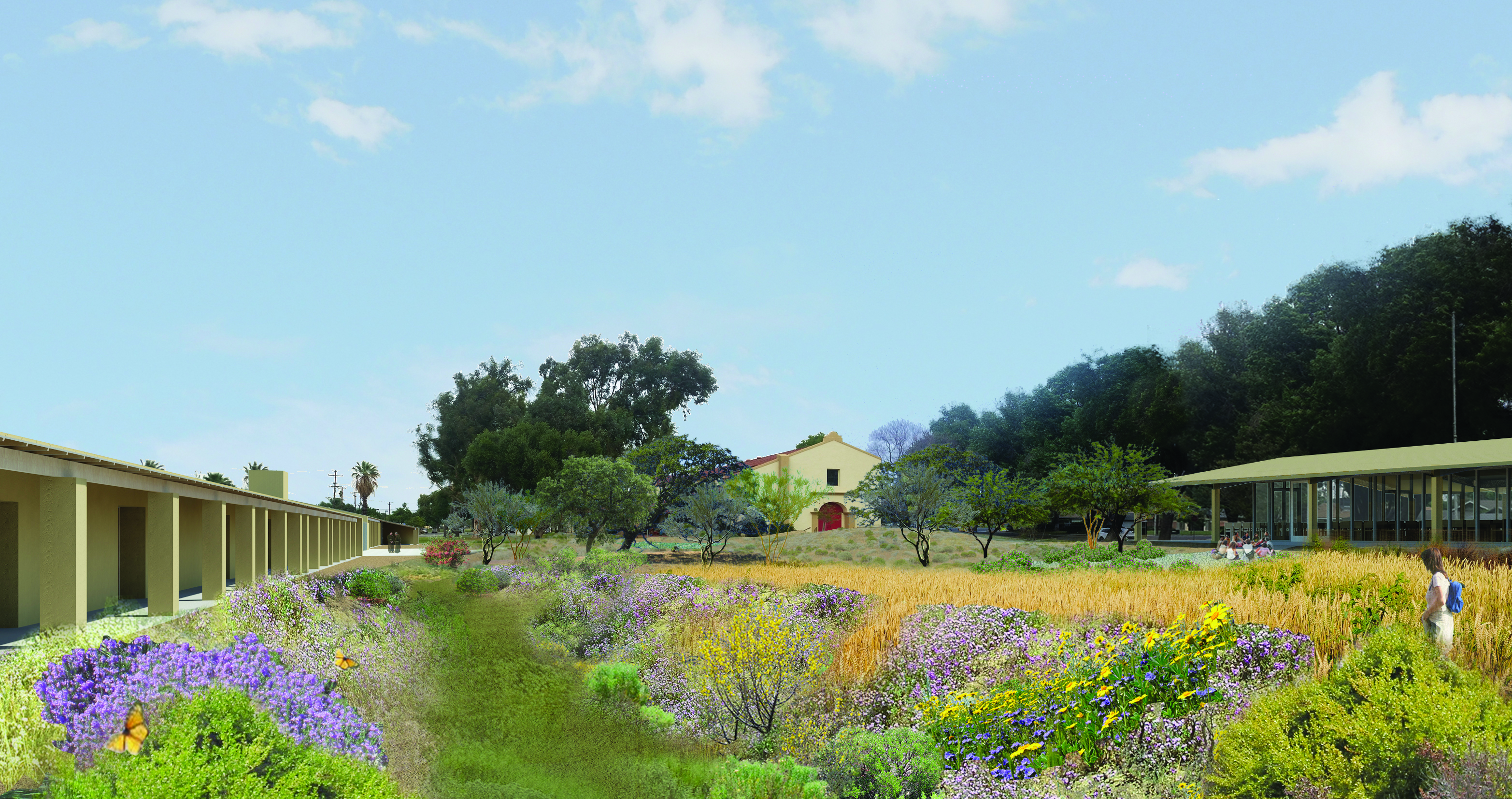St. Michael’s Friary
Riverside, California2015-Present



A 4-acre (1.6 hectare) religious campus project, the second phase of Mercy House, in Riverside, California, recreates the meaning of church, ecclesia, in a collective congregation of various spiritual traditions, placed within a model urban garden. The interfaith community includes an Episcopal Ministry, and other Christian denominations, and a Native American Talking Circle, to which will be added the Society of St. Francis, an Episcopal order of Franciscan friars. Embedded within this spiritual community will be: a large urban farm consisting of an aquaponics greenhouse (where fish and plants cohabit in a nearly closed-loop system); a large agricultural area with raised vegetable beds; Native American “Three Sisters” planting (corn, beans, and squash); a field for rotational seasonal planting of mustard (spring), wheat (summer), and clover (winter); a citrus garden; and a “food forest” (fruit and vegetable planting groups called guilds). Symbolic biblical plants related to Christian sacraments (wheat, grapes, and olives) will be included.
Daily life in a monastic community is marked by the observance of canonical hours with fixed hours of prayer known as the Offices. The friars of the Society of St. Francis keep to a four-fold Office, gathering for prayer four times a day: morning (Lauds); noon (Little Office); evening (Vespers); and night (Compline). As noted in the lyrics of The Canticle of the Creatures composed by Francis in 1224, he considered all aspects of nature as incorporate beings. Referring to this exaltation, openings are placed in the chapel to let in Brother Sun, Sister Moon, Brother Wind, Sister Mother Earth, poetically animat-ing the chapel when observing the Offices. Light, admitted from the openings, will traverse around the room through the day.
Daily life in a monastic community is marked by the observance of canonical hours with fixed hours of prayer known as the Offices. The friars of the Society of St. Francis keep to a four-fold Office, gathering for prayer four times a day: morning (Lauds); noon (Little Office); evening (Vespers); and night (Compline). As noted in the lyrics of The Canticle of the Creatures composed by Francis in 1224, he considered all aspects of nature as incorporate beings. Referring to this exaltation, openings are placed in the chapel to let in Brother Sun, Sister Moon, Brother Wind, Sister Mother Earth, poetically animat-ing the chapel when observing the Offices. Light, admitted from the openings, will traverse around the room through the day.
